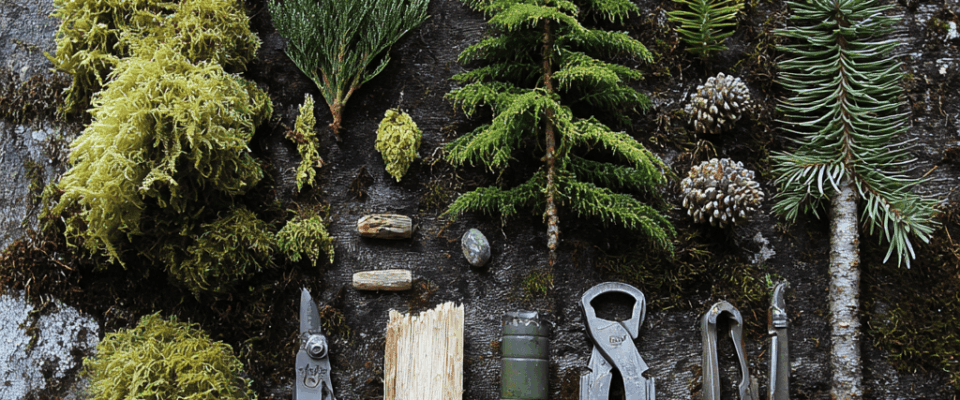Some scents instantly bring the forest to life in your mind — and cedar, moss, and pine are at the heart of that experience. For hikers, these woody notes are more than just pleasant; they connect the senses to earth, trees, and the quiet strength of nature itself. Whether you notice them on the trail or carry them in a small perfume vial, these scents anchor you in the moment and make the wilderness feel like home.
The beauty of woody notes is their balance: fresh enough to feel crisp in the morning, warm enough to comfort you after sunset. Hikers who appreciate fragrance know that these natural aromas don’t overpower the outdoors — they blend with it, reminding you why you came in the first place.
Why cedar is the hiker’s timeless companion
Cedar is an ancient note found in forests across the world, from North America to Asia. Its scent is instantly recognizable — dry, slightly sweet, with a warm touch that reminds you of wooden cabins and fresh-cut logs.
For hikers, cedar symbolizes durability and calm. A whiff of cedar on a trail often means you’re near a cedar grove, with trees that have stood for centuries. When used in perfumes, cedar adds depth without being aggressive. It pairs beautifully with other green or herbal notes, creating a feeling of earthy comfort.
Many hikers choose a cedar-based balm or light scent in cooler months. It stays subtle yet present when you’re around a campfire, blending with smoke and resin. A smart trick: a tiny cedar stick in your backpack can naturally freshen up clothes and gear.
The hidden magic of mossy notes
Moss is less talked about than cedar but just as iconic. Think of a damp forest floor, where every footstep releases a soft, green aroma. Oakmoss, in particular, is prized in perfumery for its grounding effect — slightly earthy, a bit damp, with a mineral touch.
Hikers who love deep forest trails know that moss signals a healthy ecosystem. The smell of moss clings to boots and tents after a rainy night in the woods. When included in fragrances, mossy notes bring a natural wildness that reminds you of shaded clearings and ancient trails.
A good mossy scent works best for moments when you want to feel anchored. It’s ideal for mindfulness: you’re not overwhelmed, just gently reminded that nature is all around you. Many forest-inspired perfumes include moss for this reason — it bridges the gap between your skin and the soil beneath your feet.
Pine: crisp, resinous, unforgettable
Pine is perhaps the most vivid woody note. Sharp, refreshing, and unmistakably alive, the smell of pine needles underfoot or fresh resin on your fingertips is the essence of the mountains.
Unlike cedar’s warmth or moss’s damp green, pine is clear and bracing. It wakes you up. That’s why hikers love trails lined with pines — they feel fresh even after long hours under the sun. Pine essential oils or subtle pine-based scents are excellent for hot hikes, giving a clean, airy lift.
Some people tuck a small pine cone into their pack as a natural freshener. Others choose a pine-infused soap or solid cologne. Either way, pine’s crispness connects your senses to crisp mountain mornings and wind-whipped ridges.
How woody notes help you feel grounded on the trail
Hiking is about more than movement. It’s about grounding yourself — mentally and physically. Woody scents like cedar, moss, and pine work in a unique way: they remind you to breathe deeper, to pause and look at the trees instead of rushing by.
When you inhale a woody note, you naturally slow your steps. This is why many mindfulness coaches encourage hikers to notice the smells of the forest. Carrying a small scent that echoes these notes helps anchor that habit. It becomes a ritual: uncap a tiny vial at sunrise, inhale once, and remember why you’re out here.
Two subtle grounding tricks:
- Keep a sachet with cedar chips or dried moss in your pack.
- Use a lightweight solid perfume with pine or oakmoss — less liquid, no spills.
Tips for finding the right woody scent for you
Not all woody scents are created equal. Some are heavy, others too faint. The best ones feel natural, like a breath of real forest. If you’re new to perfume on the trail, start simple: try a single-note cedar or pine scent, then layer if you like.
Check for sustainable sources — many niche brands highlight how they harvest cedar or oakmoss responsibly. Look for travel-sized bottles that won’t add weight. And remember: these scents should never compete with the real forest. They should blend in, like a friendly echo.
Experiment at home before your trip. Test how a scent evolves outdoors: some notes open up in fresh air, others fade too fast. Find the balance that works for you and your gear.
Bringing the forest home after the hike
One beautiful part of hiking is that the forest stays with you. The smell of cedar on your clothes, mossy dampness on your boots, pine resin under your nails — they become memories long after you return to your routine.
Some hikers keep these memories alive with a signature woody scent at home. A few drops on a scarf, a moss-based candle on the desk — it brings you back to the trail on days when you can’t get away.
If you want to learn more about how your nose connects to these memories, check out our guide on How your sense of smell shapes outdoor memories and mindfulness.
Cedar, moss, and pine are more than just scents — they’re your invisible link to the wild. Knowing how to recognize, pack, and enjoy these notes can transform every hike, from weekend loops to month-long treks.
When the path gets steep or the rain falls hard, a whiff of pine or cedar is a quiet reminder: you’re right where you belong.
Questions and answers
They blend naturally with forest air, help you feel grounded, and create comforting memories.
Use travel-sized vials, solid perfumes, or natural sachets with cedar chips or pine cones.
No, they’re subtle and earthy, perfect for mindfulness without overpowering nature.

